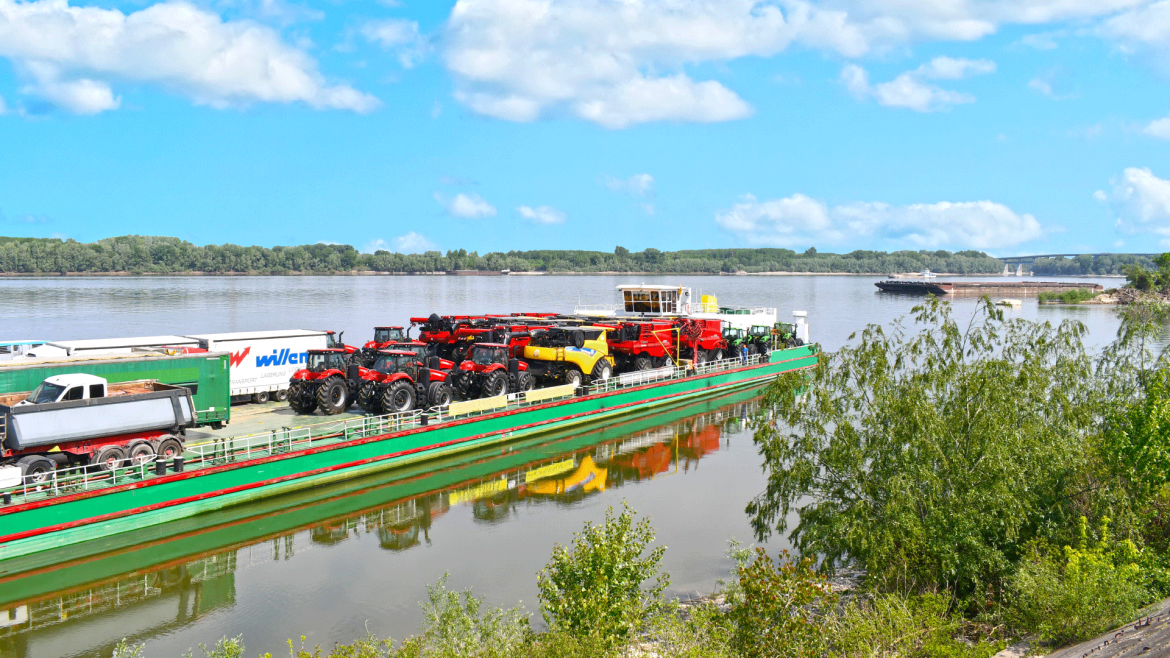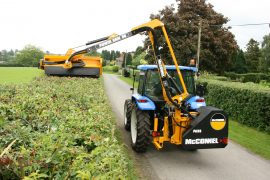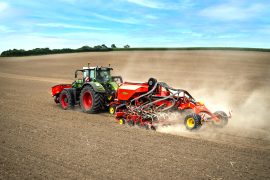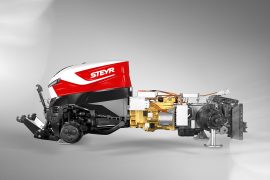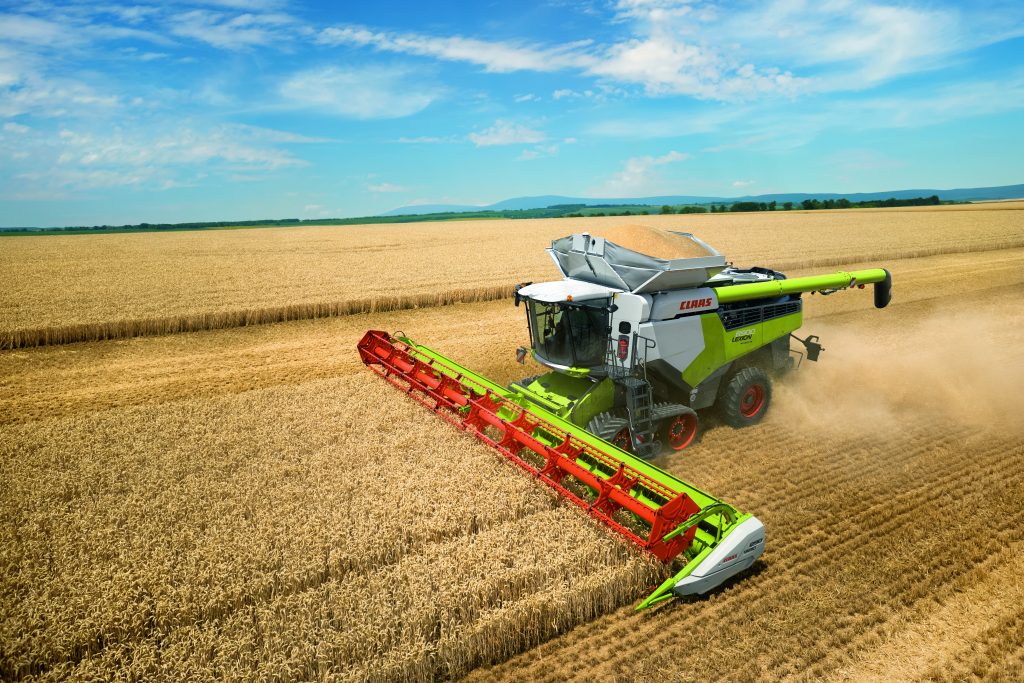Combine harvesters are the true titans of agriculture. Their sheer size means they can been seen for miles around when majestically scything through fields of ripe crop the world over. Combine harvesters bring in the crops that will, ultimately, be transformed into the food we eat, fodder for animals, not to mention a whole range of oils, bedding, grass seed, the list goes on.
Axial-Flow 6150 combine
The standard versions of the Case IH Axial Flow and New Holland CR combine models can weigh up to over 24,500 kilos (over 54,000 pounds) and this is without the harvesting header itself. Suffice it to say, it is no small feat transporting these titans from the manufacturing line to their final destination in the field.
When it comes to the logistics, delivery throughout Europe is a supremely difficult task due to the weight and dimensions of the machines. Moving them via road requires booking space on special trucks, arranging the right loading equipment and organizing the permits required to transport such large units across the different countries along the route.
The harvesting season creates a spike in demand for new combines. “This is a very seasonal product. It needs to be delivered just in time to farmers, otherwise they will lose their crops,” says Alberto Mela, Head of EMEA Finished Good Distribution and Compounds for CNH Industrial.
Moreover, combines are expensive and hi-tech, requiring a significant financial commitment on the part of buyers. In certain cases, customers are able to secure subsidies to support the purchase only at the crunch time of year when all manufacturers are shipping their products.
The Transport Logistics team at CNH Industrial was determined to find a novel solution for moving these mighty machines. They found it on the River Danube. Previously, all combines were delivered by road from the Company’s hub in Zeebrugge, Belgium, to destinations across Europe as far as Romania and Bulgaria.
In a new agreement with a third-part transporter, certain combine orders travelled 2,300 km (1,430 miles) by river from Passau, Germany to Ruse, Bulgaria. Many combine harvesters can be shipped at once, and there are no ‘exceptional load’ permits to pay as highways are avoided. River transport also means lower carbon-dioxide emissions. In 2019, 42 agricultural machines were shipped by river as a pilot project, including combine harvesters and high horsepower tractors, thus avoiding the emission of 37 tons of CO2.
“Sustainability is one of the key pillars in CNH Industrial Transport Logistics,” says Dror Noach, Head of Transport Logistics for CNH Industrial. “For this reason we are continuously looking for new intermodal transport solutions.”
While river travel amounts to 10 to 15 days versus four to five via toll roads, organizing the logistics and permits in the different countries along the highway routes means the overall time works out about the same or even better when road haulage services are unavailable.
As the customer in Bulgaria was satisfied with the delivery, this pilot project could be considered a success. “Initially they were a little skeptical and were concerned the combines might be damaged during the loading and unloading process,” says Enkeleida Berdufi, Head of Agriculture Europe Sales Administration at CNH Industrial. “However, we oversaw the disembarkation with our own teams and the customer saw that it was safe.”
Full steam ahead
The success of the 2019 pilot project has seen the Company examine all the possible ways to increase the volume of vehicles shipped by river. It plans to add tractors as well as combines, including Case IH and New Holland Agriculture equipment, and to have more loading points along the river,” says Silvia Menegon, Head of EMEA Logistics Contracting at CNH Industrial.
Another method to increase the transport service would be to use barges on the river, but the combines would have to be loaded by crane rather than be driven on. To achieve this, the Transport Logistics team is looking to add lifting brackets close to the wheels when the combines are manufactured at the Case IH factory in Grand Island, Nebraska, USA, before shipping them to Europe. “This is an exciting option that would allow us to increase the service by shipping more units along the river, which proved to be an efficient and environmentally-friendly solution,” Mela concludes.

